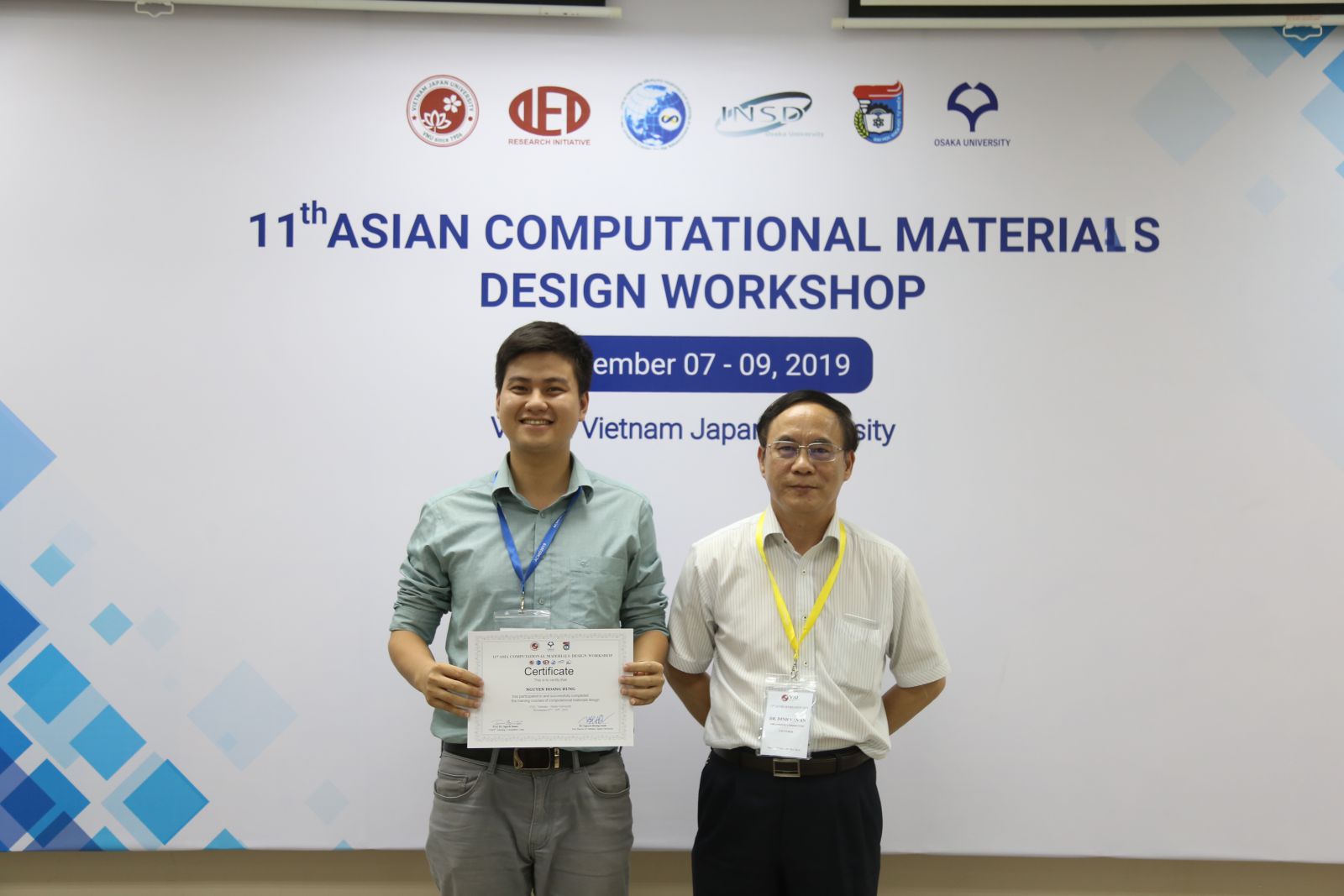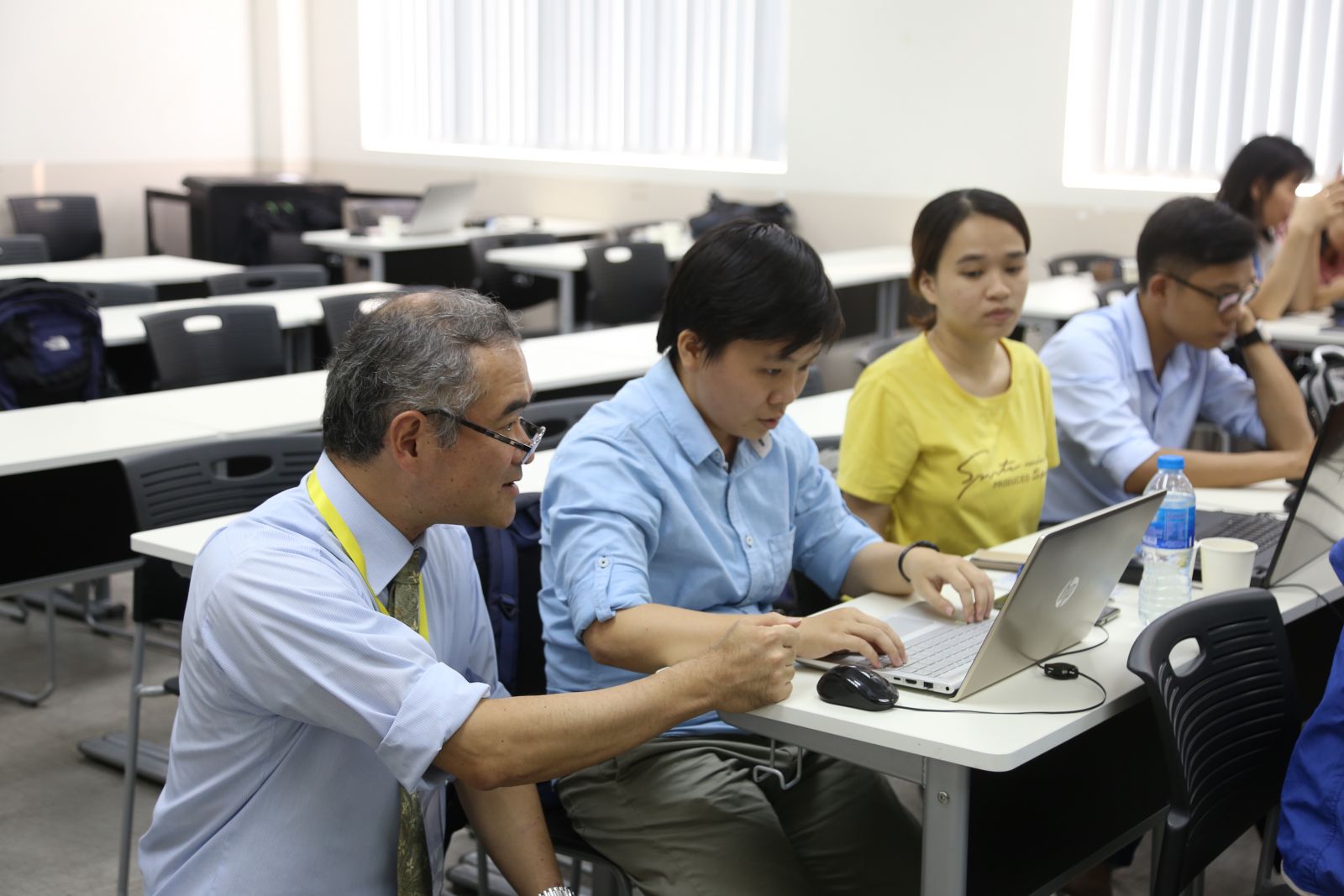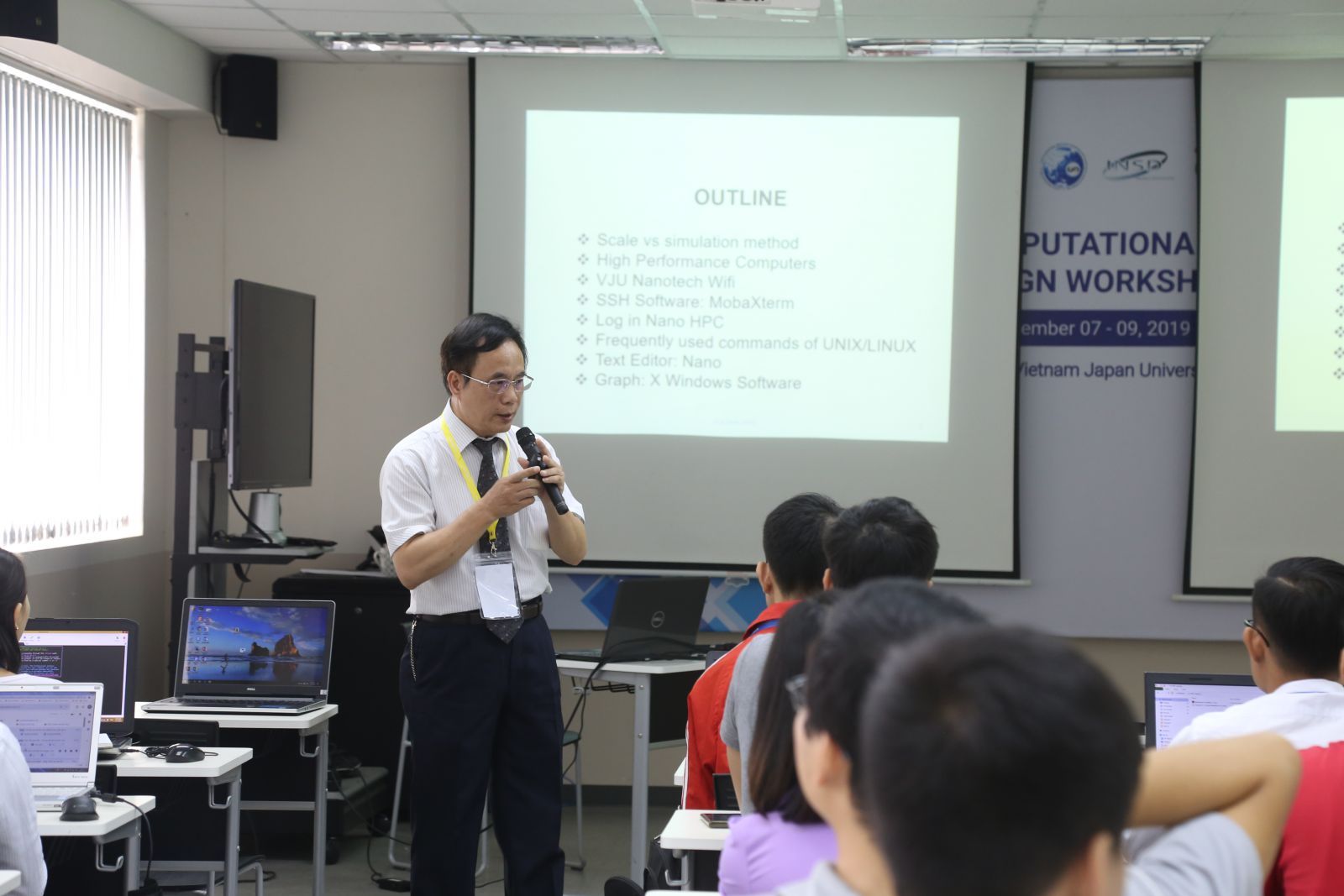After three days attending 11th Asian Computational Materials Design Workshop (ACMD), the first thing I want to say that I am very honored to be able to attend this workshop with the appearance of the top experts in this field, shared by Nguyen Hoang Hung, student of Master’s Program in Nanotechnology.
Nguyen Hoang Hung and Dr. Dinh Van An
Computational materials designs can be basically defined that is a computational approach aimed at developing new materials with specified properties and functionalities. The basic ingredient is the use of quantum simulations to solve the materials science problems in order to design a material that suits this specification. CMD® has proved its high potentiality to impact the real industrial research and development. Nowadays, CMD® is one of the most interesting research field in material sciences. CMD® Workshop (ACMD) has been organized in Vietnam from 2009 with cooperation of Osaka University and universities in Vietnam for many times. In 2019, ACMD was held at Vietnam Japan University. This workshop provided lectures on cutting-edge researches in computational material design as well as hands-on practical training con quantum simulation. The workshop also included lectures with an overview of possible roles of CMD® in Vietnam, techniques of electronic structure calculations together with their applications to design new functional materials.
Hands-on Tutorial
I am interested in Computational Material Science (CMS) for a long time. When I heard that ACMD would be organized in my campus, I registered immediately. After three days attending 11th Asian Computational Materials Design Workshop (ACMD), the first thing I want to say that I am very honored to be able to attend this workshop with the appearance of the top experts in this field (Dr. Dinh Van An, Prof. Oguchi Tamio, Prof. Sato Kazunori, Prof Morikawa Yoshitada,…). In the first day, I was introduced to High Performance Computer (HPC), VASP, … After that, I was provided the basic knowledge of density functional theory (DFT) – a fundamental theory of computational in materials science, the brief history of CMD. I also learned to practice on computer such as submit jobs to HPC, calculation and drawing density of state (DOS) and band structure of some simple structure metals by Full-potential Linearized Augmented Plane Wave (FLAPW) method. The next day, in the morning presentation, I was impressed by cutting-edge researches in computational material design researches applying in reality such as DNA (Prof. Nguyen The Toan), Perovskite material (Dr. Nguyen Tran Thuat) … In the afternoon, we moved on the hands-on practical training on the KKR-CPA method. In my opinion, this method is quite difficult but I have obtained its definition and application completely. The last day, the attendees have gone deeper on the experiment on computer lab with Stimulation Tool for Atom Technology (STATE). We calculated, stimulated and completely done real experiment on computer by using HPC. Finally, before the workshop closed, we had two more presentations about new research and Prof. Wilson Agerico Diño had the enthusiastic lecture about fundamental science question as why we are study science and why we need computational sciences.
Short Tutorial on HPC by Dr. Dinh Van An
In general, all lectures strongly inspired me and keep me to be more motivated in my study. Moreover, I was given more new knowledge to broad my mind and I think this knowledge will help me in future research. Last but not least, I want to give my sincere thanks for all the lecturers and the organizers especially Dr. Dinh Van An, as well as VJU for holding the really useful workshop.
The article was written by Nguyen Hoang Hung, student of Master’s Program in Nanotechnology.




